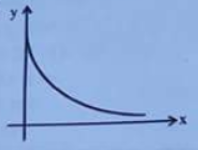Solve the following :-
(i)√√23×√92
(ii)√56×√35
(iii)√35÷√27125
(iv)√49÷√6481Solution in Gujrati
The correct Answer is:(i)√3
(ii)1√2
(iii)53
(iv)34
Step by step video & image solution for Solve the following :- (i)sqrt(sqrt(2)/(3))xxsqrt((9)/(2)) (ii)sqrt((5)/(6))xxsqrt((3)/(5)) (iii)sqrt((3)/(5))divsqrt((27)/(125)) (iv)sqrt((4)/(9))divsqrt((64)/(81)) by Physics experts to help you in doubts & scoring excellent marks in Class 12 exams.
Updated on:21/07/2023Topper's Solved these Questions
- RACEBOOK - ALLEN CHAPTER - RACEEXERCISE - Basic Maths (VECTORS)
62 Videos
- RACEBOOK - ALLEN CHAPTER - RACEEXERCISE - Basic Maths (Units, Dimensions & Measurements)
37 Videos
- RACEBOOK - ALLEN CHAPTER - RACEEXERCISE - Basic Maths (Graphs))
28 Videos
- NEWTONS LAWS OF MOTIONBOOK - ALLEN CHAPTER - NEWTONS LAWS OF MOTIONEXERCISE - EXERCISE-III
28 Videos
- SIMPLE HARMONIC MOTIONBOOK - ALLEN CHAPTER - SIMPLE HARMONIC MOTIONEXERCISE - Example
1 Videos
Similar Questions
State whether the following relations are true or false
(1)−−→AB=−−→BA
(2)−−→AB=−−−→BA
(3)∣∣∣−−→AB∣∣∣=∣∣∣−−→BA∣∣∣
(4)∣∣∣−−→AB∣∣∣=∣∣∣−−−→AB∣∣∣
(5)ˆj=ˆk
(6)∣∣ˆj∣∣=∣∣ˆk∣∣
View SolutionWhich one of the following is not a fundamental quantity ?
View SolutionWhich of the following equation is best representation of following graph's?

View SolutionAssertion: The driver in a vechicle moving with a constant speed on a straight road is in a non-inertial frame of referance.
Reason: A reference frame in which Newton's laws of motion are applicable is non-inertial.
View SolutionA rod with rectangular cross section oscillates about a horizontal axis passing through one of its ends and it behaves like a seconds pendulum, its length will be
View SolutionSimplify each of the following expressions: (i) (3+√3)(2+√2) (ii) (3+√3)(3−√3) (iii) (√5+√2)2(iv) (√5−√2)(√5+√2)
View Solution√5×√125=_______
View Solutionनिम्नलिखित व्यंजको में से प्रत्येक व्यंजक को सरल कीजिए :
(i) (3+√3)(2+√2)
(ii) (3+√3)(3−√3)
(iii) (√5+√2)2
(iv) (√5−√2)(√5+√2)
View Solutionनिम्नलिखित व्यंजकों में से प्रत्येक व्यंजक को सरल कीजिए।
(i) (3+√3)(2+√2) (ii) (3+√3)(3−√3)
(iii) (√5+√2)2 (iv) (√5−√2)(√5+√2)
View SolutionIt being given that √3=1.732,√5=2.236,√6=2.449 and √10=3.162, find to three places of decimal, the value of the following .
(i) 1√6+√5 (ii) 6√5+√3 (iii) 14√3−3√5
(iv) 3+√53−√5 (v) 1+2√32−√3 (vi) √5+√2√5−√2
View SolutionSimplify
2+√32−√3+2−√32+√3
View Solutionजाँच कीजिए कि निम्नलिखित संख्याएँ परिमेय हैं या अपरिमेय :
(i) √5, (ii) √9, (iii) 1+√2, (iv) 2+√4
(v) √3−√5 , (vii) (5+√2)(5−√2) , (vii) (√3−√2)2
View Solutionनिम्नलिखित व्यंजकों में से प्रत्येक व्यंजक को सरल कीजिए :
(i) (3+√3)(2+√2 , (ii) (3+√3)(3−√3)
(iii) (√5+√2)2
(iv) (√5−√2)(√5+√2)
View Solution√5687×√1245÷√689=?÷13
View SolutionSimplify each of the following expressions:
(i) (3+√3)(2+√2)
(ii) (3+√3)(3−√3)
(iii) (√5−√2)2
(iv) (√5−√2)(√5+√2)
View SolutionDo as directed:
(i) Add : √125+2√27 and −5√5−√3
(ii) Add: √7−√11 and √5−√11+√13
(iii) Multiply : 2√2 by 5√2
(iv) Multiply : (−3+√5) by 3
(v) Divide : 7√5 by −14√125
Divide : 7√5 by −14√125
(vi) Divide : 2√216−3√27 by 3
View Solution
